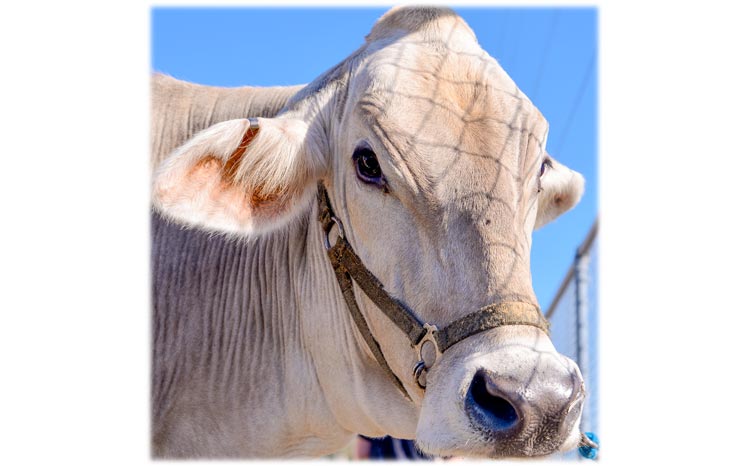YOU WANT TO BE AS COOL as a cucumber when working with your show cattle, and an important part is heading off heat stress in your animals. In Florida, the conditions are just about always ripe for creating heat stress in your show cattle.
THE ADVERSE EFFECTS OF HEAT STRESS
Avoiding heat stress is paramount to the health of your cattle, assures Bridget Stice, a UF/ IFAS Livestock Extension Agent for Polk County. In the short-term, “heat stress may cause animals to go off feed,” she shares. In severe cases, it can be dire. “Ultimately heat stress can potentially lead to death,” Stice warns.
In the long-term, “heat stress can negatively impact conception rates, embryonic loss, and lower birthweights in breeding animals,” Stice explains, adding that heat stress can also make an animal more susceptible to such issues in the future. “Animals that have been through severe heat stress may be more sensitive later,” she continues, “and may show signs of heat stress at lower temperatures.”
DETECTING HEAT STRESS
It’s especially important to know the signs and symptoms of heat stress in cattle, because there are so many conditions that could lead to the ailment. “There is really no set temperature point that heat stress becomes a concern,” Stice explains, adding that there are many things to look for. “There are several factors at play that affect an animal’s heat stress response,” she states. For those who are concerned with show cattle, Stice describes that “these would include factors like confinement versus open pasture, body weight, hide color, and activity level.”
While animals that are confined, heavy, dark in color or experiencing high activity — such as during handling — are much more likely to experience heat stress, any animal can suffer the negative effects of high heat and humidity. “The important thing is to be aware of the signs of heat stress in cattle. These include slobbering, high respiratory rates (panting), open mouth breathing, lack of coordination, and trembling,” Stice points out.
COMBATING HEAT STRESS
The conditions that lead to heat stress can be created in any number of settings, so it’s important to know how to keep cattle cool no matter the situation. “Heat stress can be reduced by offering shade, air flow (fans), water, and avoiding overworking the cattle and transporting the cattle during heat stress,” Stice observes.
Water is a vital factor. “Water should be fresh, clean, and cool,” she states. “Troughs that are in the open in direct sunlight tend to be hot. Cattle will not want to drink hot water, nor will it help cool them down.” Water can also be used to create a cooler environment. “Sprinklers or hoses can be a source of decreasing heat stress in cattle. Larger droplet size is better than misting as misting may add to heat stress by increasing humidity. Watering the ground with hoses and allowing cattle to stand in the water or on the wetted ground offers significant relief.”
CREDIT
article by ERIKA ALDRICH

